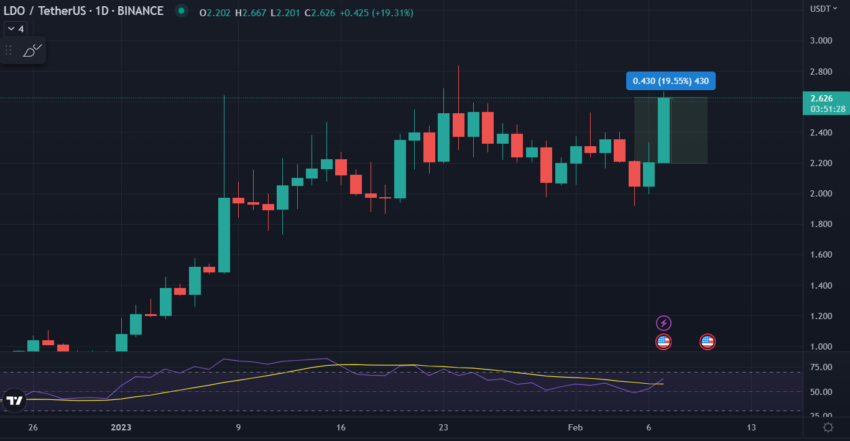Liquid staking protocol Lido introduces V2 of its protocol to expand Ethereum Node Operator configurations and test withdrawals of ETH.
The protocol will introduce a Staking Router smart contract to modularize node operator registries containing validators’ private keys to achieve this.
Staking Router Smart Contract Modularizes
According to a blog post, separate registries will enable rapid prototyping of different Node operator topologies, whose diversity will improve Ethereum’s decentralization and resistance to 51% attacks.
The Staking Router smart contract will afford developers flexibility in assigning different fee structures for different topologies, with the potential to reduce gas costs by moving validator keys off-chain. Additionally, the smart contract will coordinate ETH withdrawals and deposits according to Lido’s stake distribution mechanism.
News of the upgrade helped drive up Lido’s price by 15% at press time.

Ethereum’s consensus mechanism changed from the energy-intensive proof-of-work model to a proof-of-stake mechanism on Sep. 15, 2022, in an upgrade known as The Merge. After that, validators, rather than miners, had the job of securing the network. Validators could stake 32 ETH in a staking contract on Ethereum’s Beacon chain consensus layer to activate validator software. Validators are offered returns on their staked ETH to incentivize their participation in securing the network.
Liquid staking protocols like Lido offer stakers incentives for staking less than 32 ETH by pooling their ETH with other stakers and allocating staking rewards according to the protocol’s rules. Stakers receive liquidity tokens called stETH with the same value as ETH. Stakers can use StETH on decentralized finance protocols to earn further rewards.
According to Dune Analytics, Lido currently holds 29% of all staked ETH. Additionally, it accounts for almost 90% of all ETH in liquid staking protocols. Rocketpool has the second-highest proportion of staked ETH at 7%, while Frax Finance is third at 1.5%.
Liquid Staking Booming on Polygon and Solana
Ethereum validators are not the only beneficiaries of liquid staking pools. Solana holders can stake their SOL in Marinade Finance to earn up to 6.43% yearly yield. In return, they receive mSOL liquidity tokens to invest in various Solana DeFi projects like Raydium to earn additional rewards. The Solana staking protocol with the highest total value locked is Lido, with 2.4 million SOL, followed by Socean, with about 89,000 SOL. Lido’s popularity could be due to its issuance of stSOL, which can be used by Solana DEXes like Aldrin to generate yield without user intervention.
Polygon holders can earn between 6.4 and 9.55% in annual yields by staking MATIC in Lido, ClayStack, Ankr, and Stader. Stakers can receive stMATIC, csMATIC, aMATICb, and MaticX to invest in other Polygon DeFi protocols. Lido holds the highest volume of staked MATIC with over 73,000,000 locked. Stader follows with 43,300,000, with about 1 million and 2 million MATIC locked in Ankr and Claystack. Stader’s popularity comes partly stakers can use MaticX token on many DeFi protocols, including AAVE, Balancer, and Beefy Finance.
Lido’s liquid staking pool for DOT holds about $18 million worth of the token. Karura, the main DeFi hub for Polkadot’s Kusama network, has 192,000 KSM in its staking protocol, offering yields of over 20%. In comparison, Lido’s liquid staking service for Kusama offers about 17.1%, with about 84,000 KSM staked.
For Be[In]Crypto’s latest Bitcoin (BTC) analysis, click here.
 beincrypto.com
beincrypto.com
